What Are AI Mentions?
AI mentions are references to brands in AI-generated responses—like those provided by ChatGPT, Google AI Overviews, and Google AI Mode.
AI mentions can appear in various conversational contexts, and their tones can be positive, negative, or neutral. Mentions can also be linked or unlinked.
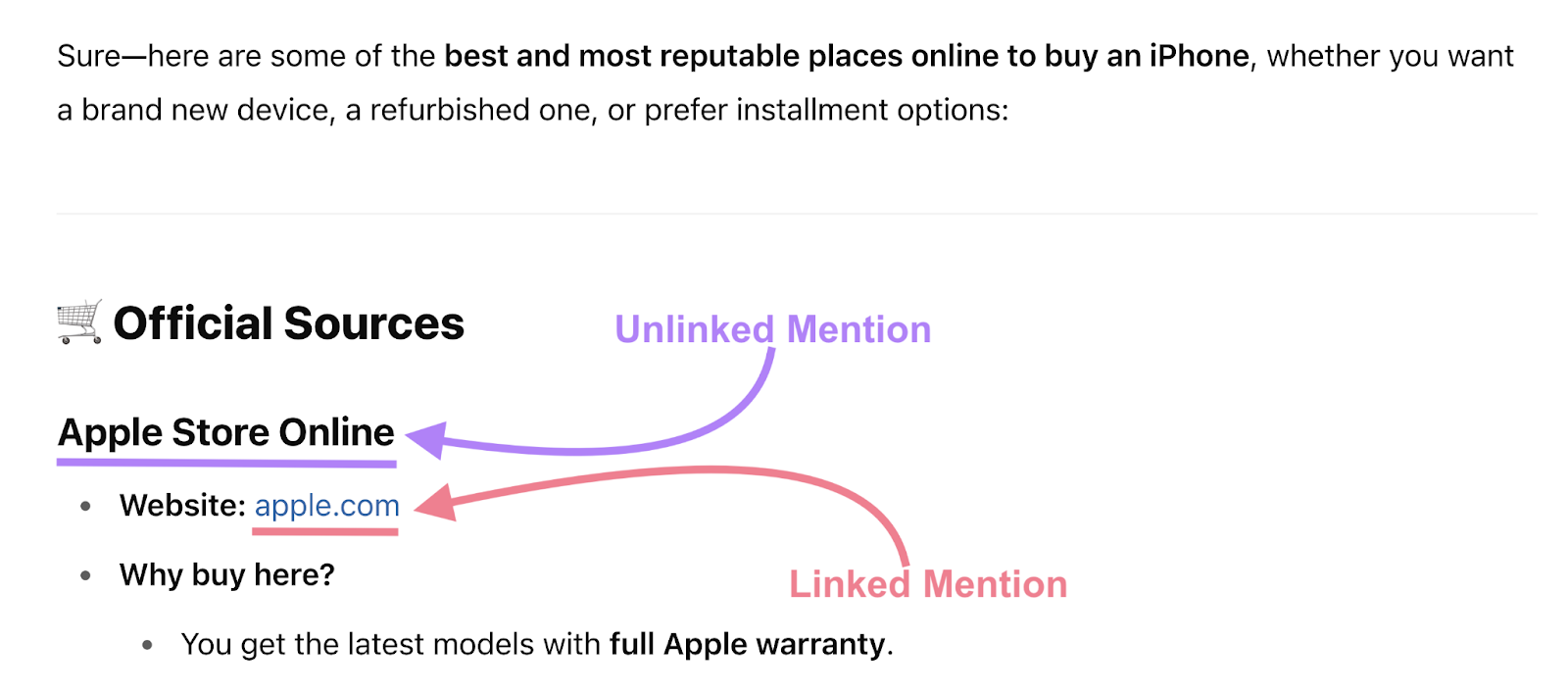
Your brand’s visibility and portrayal in AI-generated responses depends on three main factors:
- Your brand’s visibility and portrayal in the model’s training data
- Your brand’s visibility and portrayal in any supplementary data sources (e.g., web results)
- The tool’s understanding of the user and their prompt
AI Mentions vs. AI Citations
AI citations are references to specific sources or pages used to generate AI responses, rather than general references to brands in AI responses.
Generative AI tools (commonly known as LLMs) sometimes include AI mentions and AI citations in the same response. Like this:

Why Are AI Mentions Important?
AI mentions are important because they can influence users’ buying decisions. This is largely because LLMs can provide personalized and human-like responses that users trust.
Basically:
- If an LLM mentions your brand favorably or neutrally, users may be more likely to engage with your business
- If an LLM mentions your brand unfavorably, users may be less likely to engage with your business
- If an LLM doesn’t mention your brand in relevant contexts, users might not even hear about your brand
LLMs are also highly influential because they can guide users through the entire buying journey, eliminating the need for users to engage with other marketing touchpoints.
To reach and influence target audiences during these centralized buying journeys, you must secure favorable AI mentions. And try to get an edge over any mentioned competitors.
Linked AI mentions may be particularly valuable because they can encourage users to click through directly to your website.
How Visible Are AI Mentions?
AI mentions can be highly visible to your target audience because AI responses are becoming more widespread:
- Google displayed AI Overviews on 13.14% of search results pages in March 2025 (Source: Semrush AI Overviews Study)
- Google's Head of Search, Liz Reid, described AI Mode as "the future of Google Search" (Source: Google via YouTube)
- ChatGPT attracted almost 600 million unique visitors in May 2025 (Source: Traffic Analytics)
- AI search could drive more web traffic than traditional search by 2028 (Source: Semrush AI search study)
And AI mentions are highly prevalent within AI-generated responses.
AI models include brand mentions in 26% to 39% of responses, according to a Semrush analysis of 1 million varied, non-branded queries across five LLMs.
Here’s a breakdown of AI mentions’ prevalence by LLM:
| LLM | AI Mentions’ Prevalence |
| ChatGPT | 26.07% |
| ChatGPT Search | 39.36% |
| Google AI Overview | 36.93% |
| Perplexity | 30.55% |
| Gemini | 31.14% |
You can get a feel for the prevalence of AI mentions for all brands in your niche by using LLMs for yourself.
How to Get More AI Mentions
Based on our current understanding of how AI systems work, there are two main ways to get more AI mentions for your brand:
- Get brand mentions in context-rich content
- Publish in-depth content about your brand
Get Brand Mentions in Context-Rich Content
Getting brand mentions in context-rich content means motivating people to talk about your brand within substantive and topically relevant online content. Such as blog posts, news articles, social media posts, Reddit comments, and Quora questions.
This can lead to more AI mentions because LLMs may cite this content when searching the live web.
Plus, the content may be used as LLM training data in the future. More frequent, context-rich mentions make your brand appear more prominent and help LLMs understand your relevance to user needs. Which can lead to you getting more AI mentions.
How to Get Brand Mentions
You can generate brand mentions that may be valuable for LLM optimization by:
- Writing guest posts for reputable sites in your niche
- Responding to relevant media inquiries
- Contributing to relevant online communities and social discussions
- Listing your brand on relevant, high-quality directories
- Creating useful and engaging content that people want to share or cite
- Using affiliate marketing and influencer marketing to generate buzz around your brand
- Launching campaigns, events, and products that get people talking
- Pitching your brand, product, or content for inclusion in relevant blog posts
Use a tool like Brand Monitoring to track your brand mentions across the web.
Where to Get Brand Mentions
Pursuing brand mentions on relevant websites and webpages that LLMs already cite could be the most effective way to get more AI mentions.
For example, if ChatGPT recommends products from an industry listicle, you could benefit from getting your product featured in that listicle.
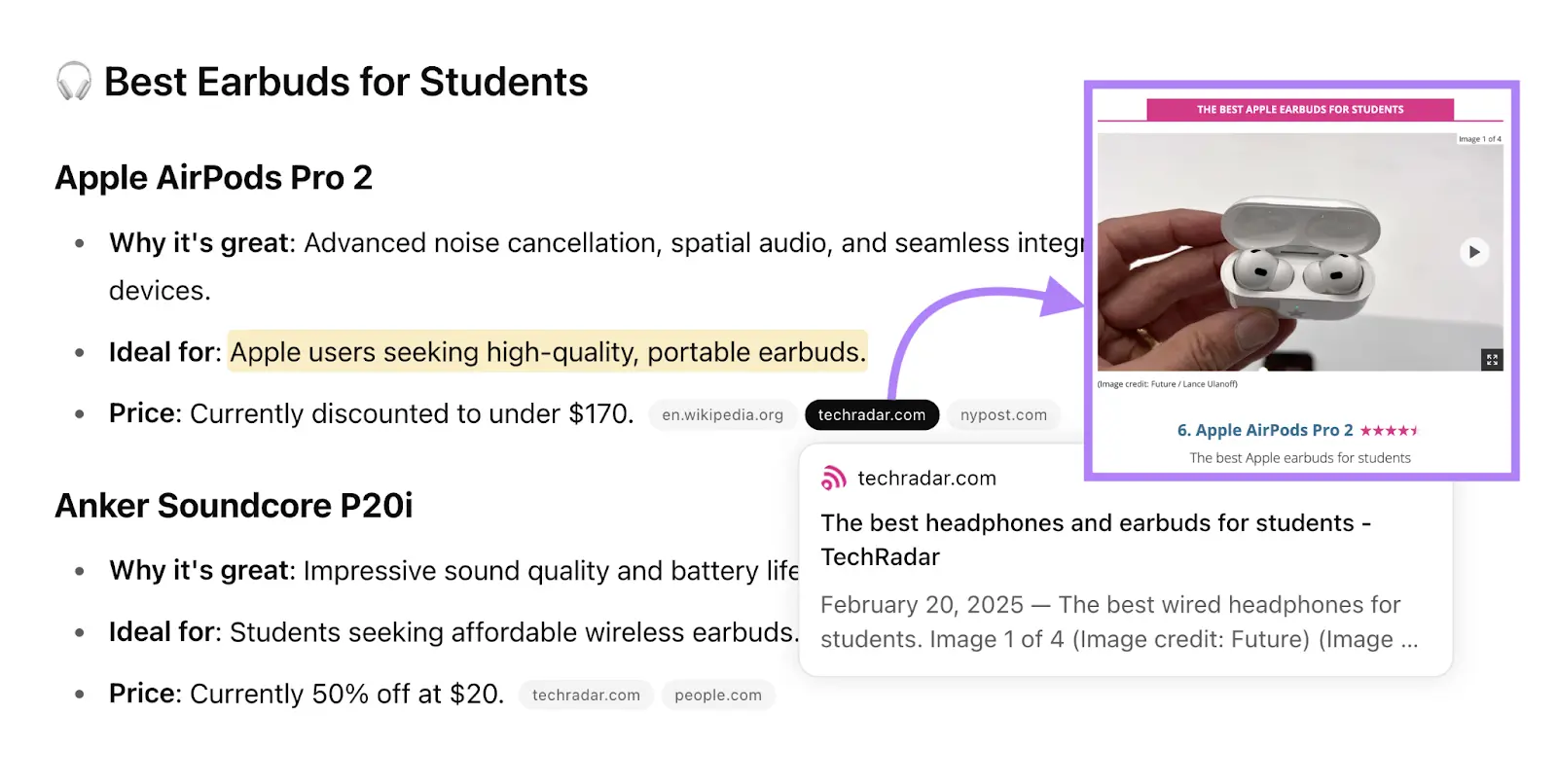
Just bear in mind that LLMs can cite different webpages depending on the user, the conversational context, and other factors.
You can discover the most commonly cited websites and webpages in your niche with Semrush Enterprise AIO. The tool identifies and submits prompts relevant to your brand, then analyzes the responses for mentions and citations.
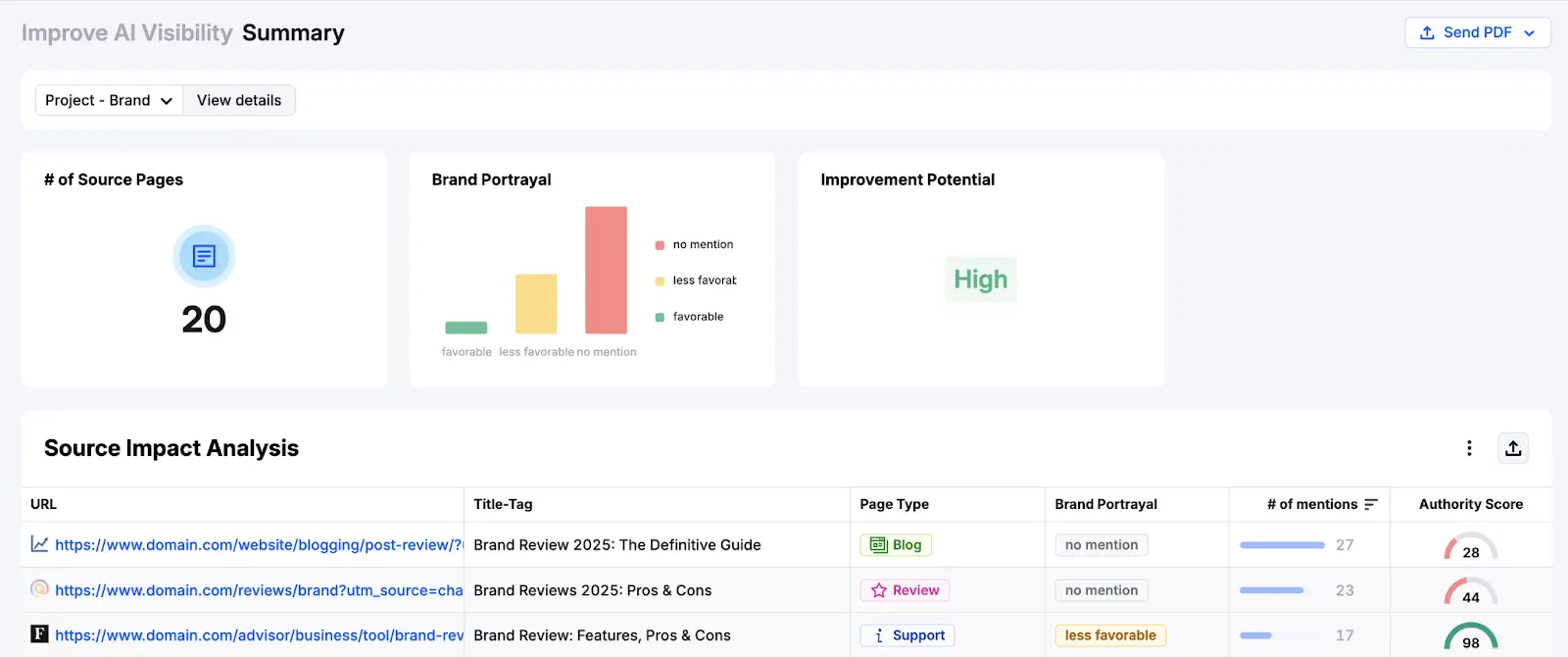
If an enterprise tool isn’t right for you, manual research can give you some basic insights to work with.
Generally, aim to get your brand featured on reputable websites that may have more influence on LLMs, search engines (which LLMs may retrieve information from), and users.
Publish In-Depth Content About Your Business
Publish diverse, in-depth content about your business, products, and services to give AI systems more information to learn from and use.
This content can lead to more AI mentions by making it easier for LLMs to associate your business with individual users’ needs, which can be highly specific.
For example, Semrush’s content may help ChatGPT understand our products’ relevance to highly specific prompts like this one:
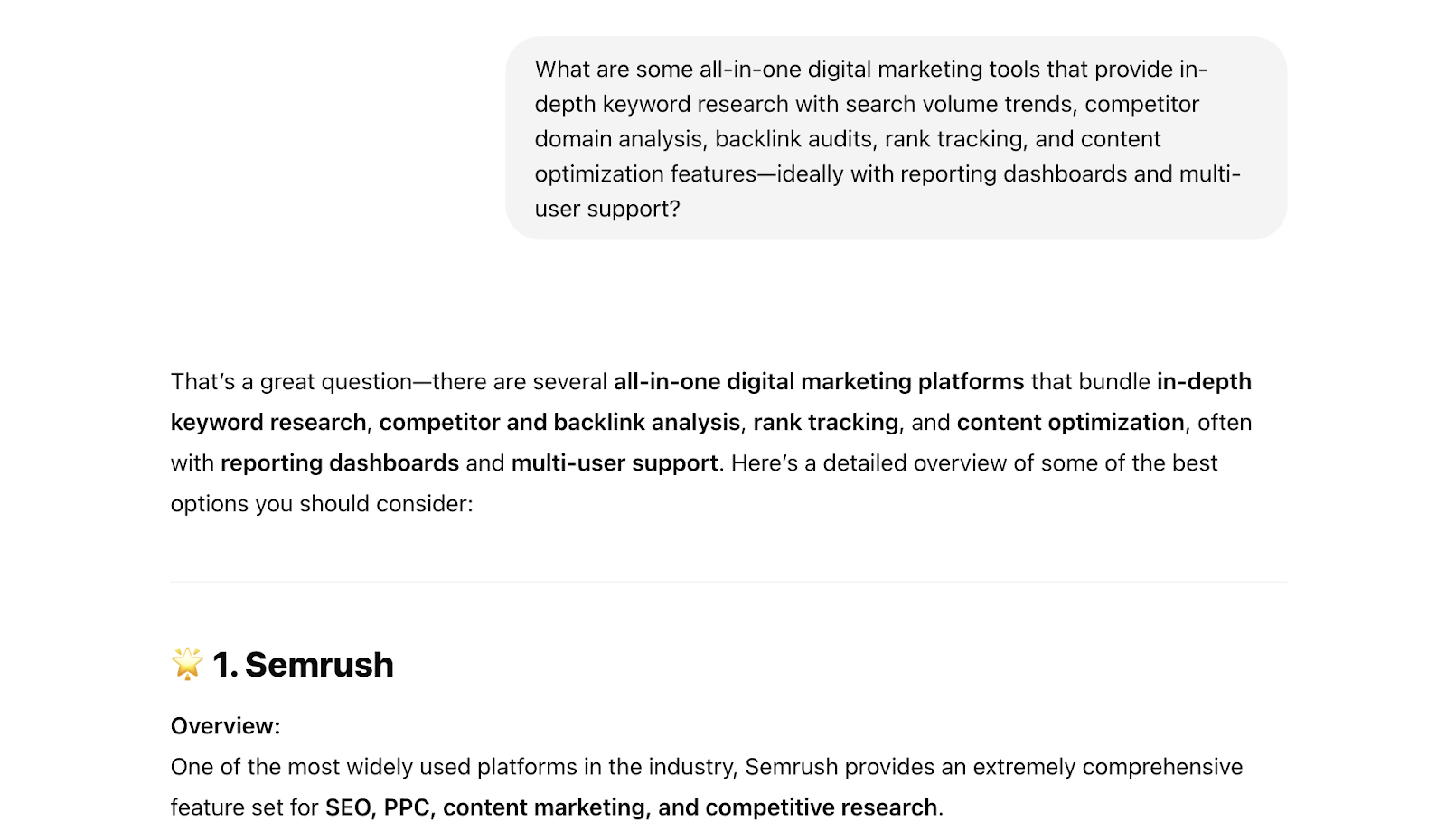
What Type of Content to Create
You can give AI systems more nuanced information about your brand by:
- Creating custom-made content for each target audience
- Covering product specifications in-depth
- Providing direct comparisons between different solutions you offer
- Describing specific use cases for your products and services
- Writing detailed guides about your unique selling points
- Publishing content about your brand values
- Making specific landing pages for each product, service, or location
For insight into the kinds of prompts your target audience uses in LLMs, use the Semrush AI Toolkit.
The toolkit identifies relevant prompts from a vast prompts database and categorizes these queries based on intent.
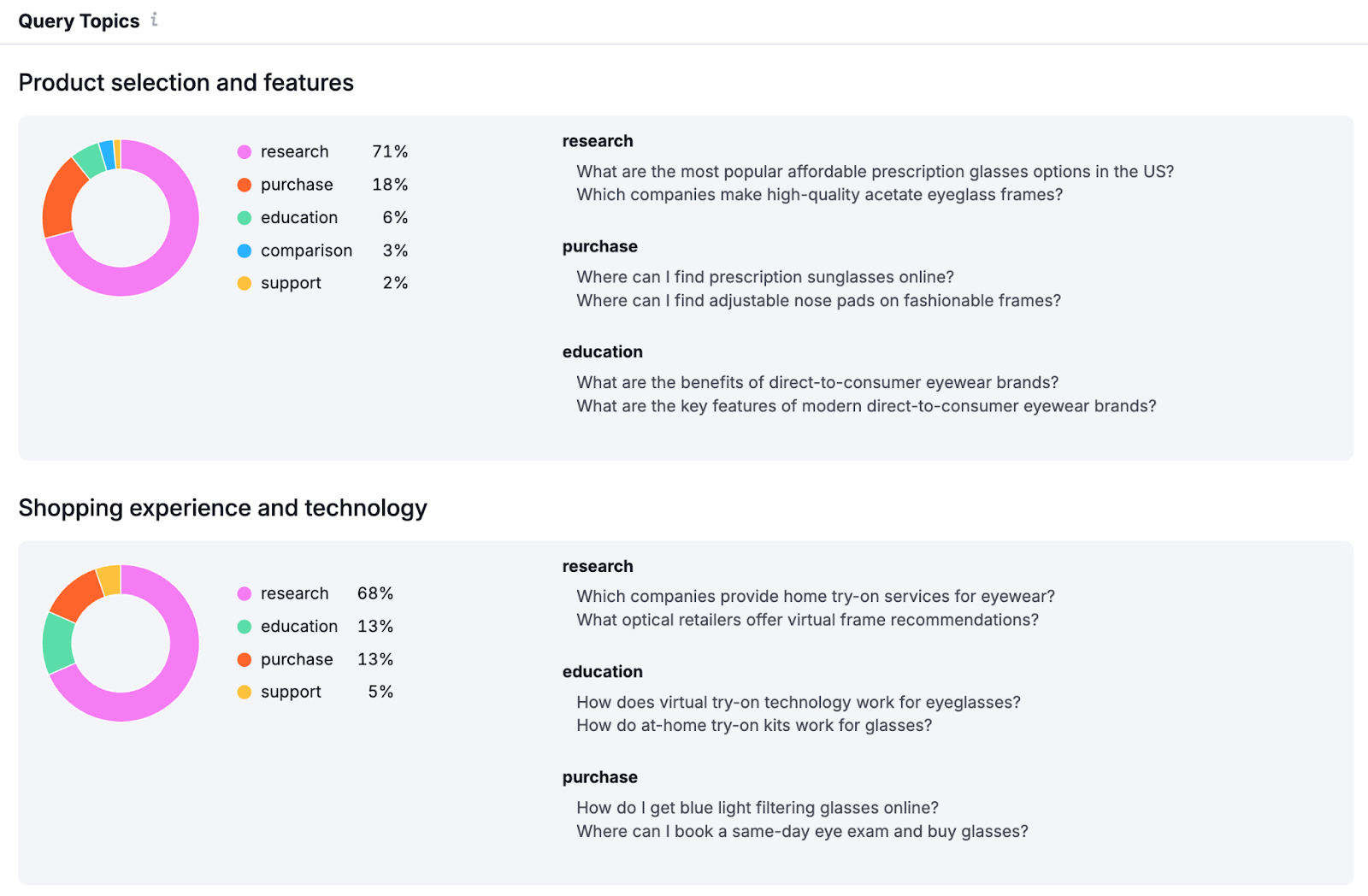
Just bear in mind that these prompts aren’t exhaustive. Many people use highly specific and unique prompts in AI tools.
How to Make Your Content Accessible to LLMs
If you want your content to influence LLMs, make sure it’s accessible to AI crawlers and search engine crawlers (since LLMs can sometimes retrieve information from search engine databases).
Check that the pages you want to be crawled and indexed:
- Prioritize server-side rendering over JavaScript rendering
- Aren’t blocked by robots.txt or robots meta tags
- Are publicly accessible (i.e., not hidden behind a paywall or registration wall)
- Are included in your XML sitemap
You can check your website for potential crawlability issues by using Semrush’s Site Audit tool.
How to Improve the Sentiment of Your AI Mentions
You may be able to improve the sentiment of your AI mentions by improving and protecting your brand’s reputation with the following activities:
- Strengthen your brand messaging. Clearly and consistently communicate your brand’s unique value propositions (UVPs).
- Manage online reviews. Solicit reviews from happy customers or clients and respond to your reviews tactfully.
- Create case studies. Publish content that proves the success of your products or services, using data to back up your claims.
- Plan a crisis management strategy. Determine how you’ll respond to any negative stories or comments about your brand—just in case.
- Gather and act on feedback. Collect feedback from your target audience and use it to improve your business practices.
You can monitor the sentiment of AI mentions with the Semrush AI Toolkit. As we’ll discuss in the next section.
How to Track Your AI Mentions
To track AI mentions for your own brand and competitors’, use a third-party tool like the Semrush AI Toolkit.
(A third-party tool works best because none of the generative AI providers have native tools for tracking AI mentions. And manual tracking can provide misleading results due to the way LLMs personalize their responses.)
The Semrush AI Toolkit works by:
- Searching its vast prompts database to find prompts relevant to your brand
- Running these prompts through LLMs, including ChatGPT, Perplexity, and Gemini
- Analyzing the AI responses for brand mentions and sentiment
You can find your results in the toolkit’s dashboard and focused reports.
The “Market Share” metric shows what percentage of all AI mentions in the dataset are specifically for your brand.
In the “Brand Performance” report, you can compare your Market Share by AI platform. And see how your share of AI mentions compares against your chosen competitors’.
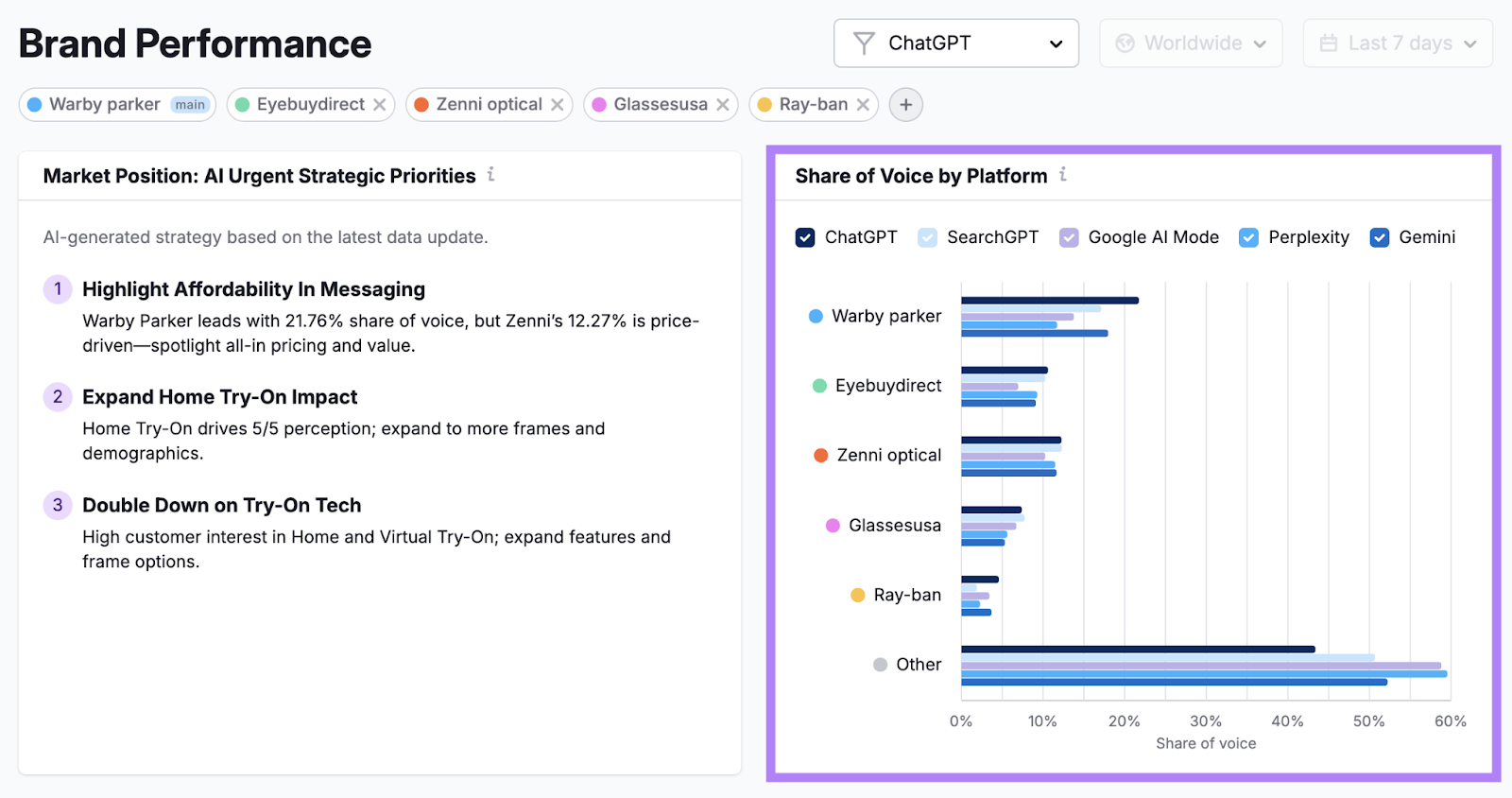
You can also monitor the sentiment of your AI mentions with the Semrush AI Toolkit.
The toolkit shows how LLMs portray your brand. So you can work to emphasize your strengths and mitigate your weaknesses.
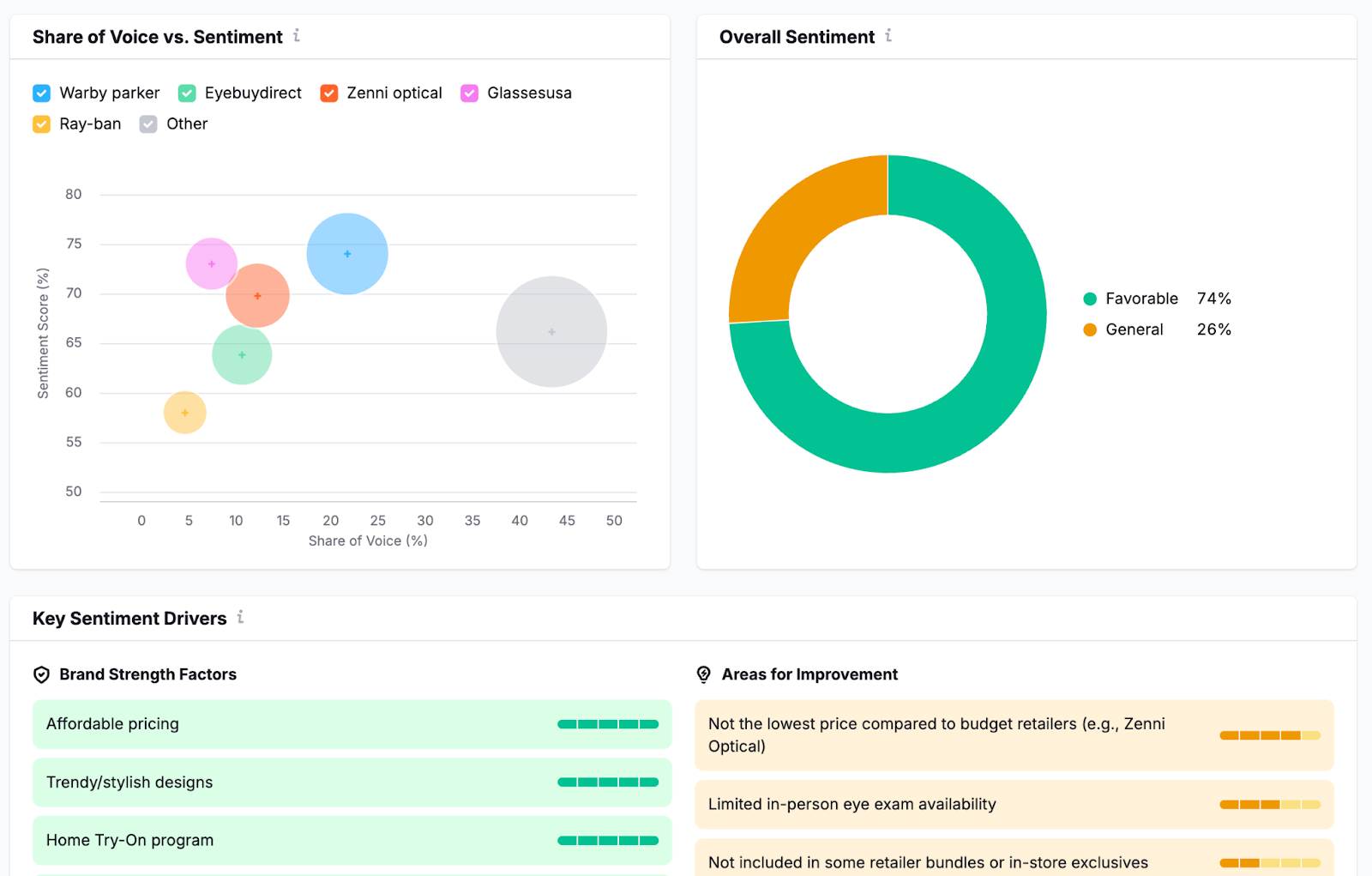
The toolkit also provides detailed, actionable recommendations to help you improve your LLM optimization strategy.
Sign up now or explore our interactive demo.